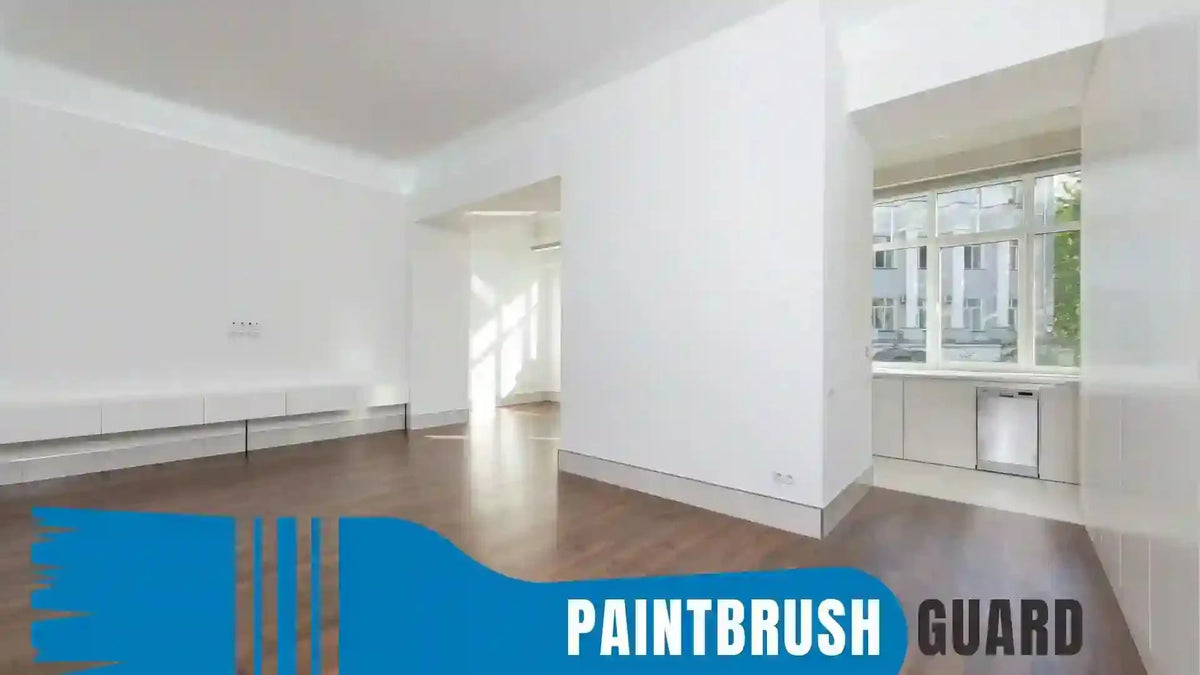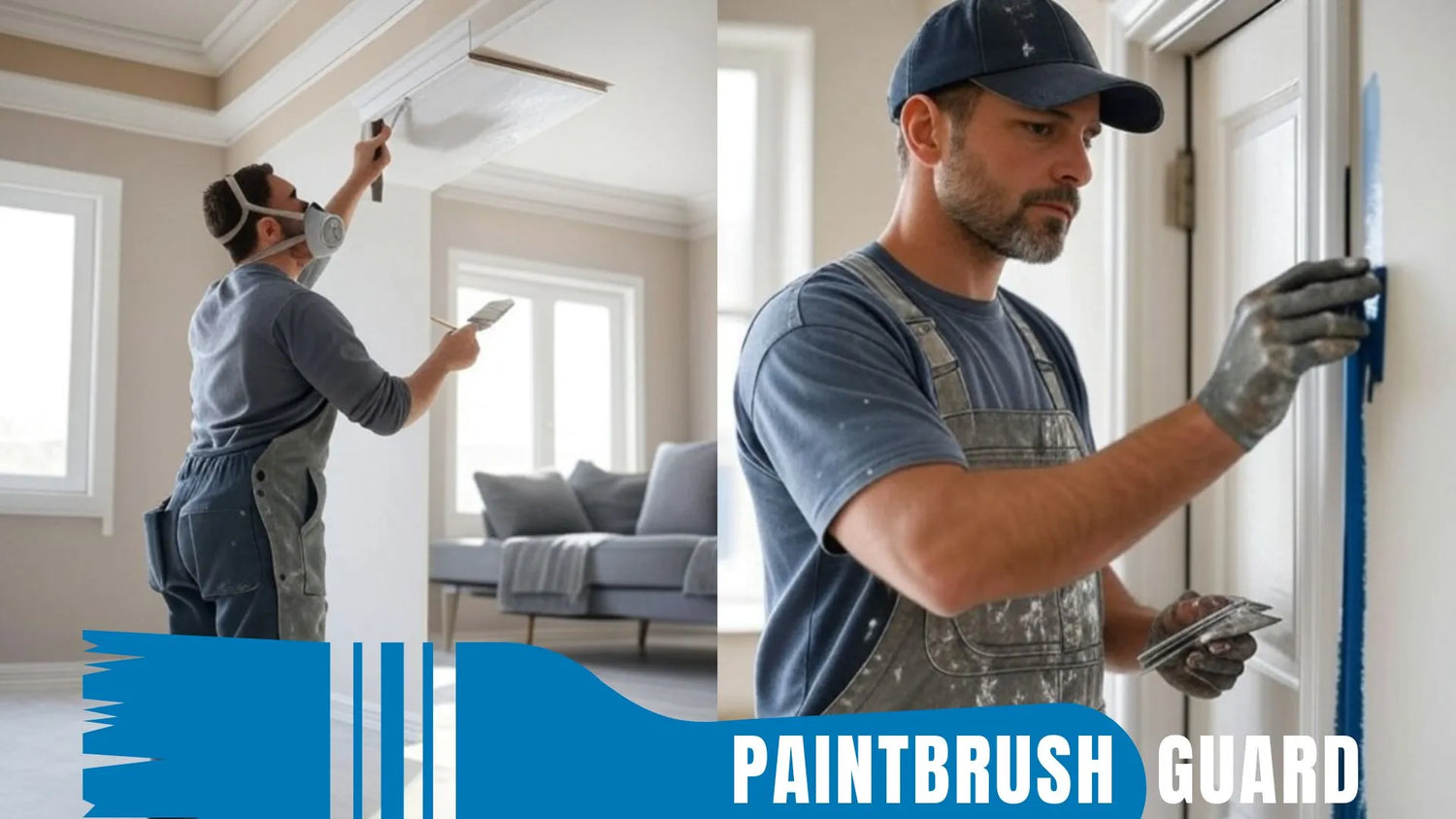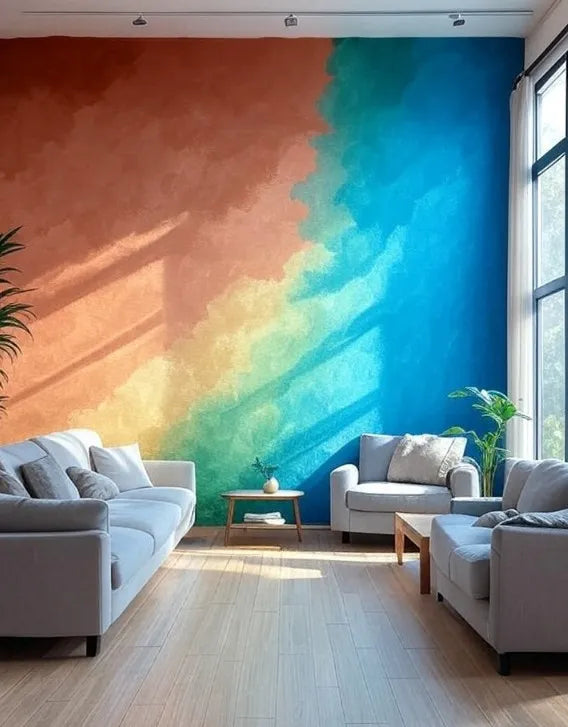
Average Cost to Paint the Interior of a House
|
Time to read 7 min
|
Time to read 7 min
In this article, we’ll break down typical costs, explore the factors that influence pricing, and share practical tips to help you manage your budget while achieving a stunning result.
Painting the interior of your home can transform its appearance, elevate its atmosphere, and even increase its resale value.
Whether you're refreshing a single room or tackling a whole-house makeover, understanding the average cost to paint the interior of a house is key to planning your project effectively.
If you are planning to paint your house interior, in this article you will learn easy steps to make your home interior feel new again with step-by-step guides for all interior surfaces.
Before diving into your painting project, knowing the average cost to paint the interior of a house helps you set a realistic budget and avoid unexpected expenses.
Costs can vary widely depending on your home’s size, the quality of materials, and whether you hire professionals or go the DIY route.
By understanding these costs upfront, you can make informed decisions and ensure your investment delivers the desired outcome.
The average cost to paint the interior of a house typically ranges from $2,000 to $6,000, depending on various factors like square footage and project scope.
Professional painters generally charge between $2 and $6 per square foot, which includes labor, paint, and basic prep work like sanding or minor wall repairs.
However, regional differences and specific project details can shift this estimate higher or lower.
Learn how to do house interior painting for ceilings. Use eco friendly paints and sustainable painting tips to brighten rooms with this step-by-step guide.
The size of your home is a major driver of the average cost to paint the interior of a house. Here’s a breakdown of typical costs based on square footage:
These figures assume standard conditions, walls in decent shape and no major repairs. Homes with high ceilings or intricate layouts may push the average cost to paint the interior of a house toward the higher end.
If you’re painting only specific rooms, the average cost to paint the interior of a house can be calculated per room. Here are some typical ranges:
These costs depend on room size, complexity (e.g., cabinets in kitchens), and whether you include extras like trim or ceilings.
Learn to clean, prime, and paint trim with eco friendly paint for neat, crisp lines. Get sustainable painting tips to make window and door frames pop with this step-by-step guide.
Several variables can influence the average cost to paint the interior of a house. Knowing these factors allows you to anticipate expenses and adjust your plans accordingly.
Larger homes naturally require more paint and labor, increasing the average cost to paint the interior of a house.
A sprawling layout with multiple rooms or high ceilings can also add to the time and effort needed, driving up the price.
Walls in good shape, smooth and free of damage keep costs down since they need minimal prep.
But if your walls have cracks, holes, or peeling paint, expect the average cost to paint the interior of a house to rise due to extra repair work and priming.
The paint you choose has a big impact on the average cost to paint the interior of a house.
High-quality paints ($30–$70 per gallon) offer better coverage and durability, potentially saving money over time by reducing the need for multiple coats.
Budget paints ($15–$20 per gallon) are cheaper upfront but may require more work to achieve a polished finish.
Learn how to prep, prime, and paint doors with eco friendly paint for a strong, pretty finish. Discover sustainable painting tricks for smooth, drip-free doors in this step-by-step guide.
Labor typically makes up 70% to 85% of the average cost to paint the interior of a house.
Professional painters charge $25 to $75 per hour, depending on their expertise and your location. In high-cost-of-living areas, rates may skew higher.
Painting trim, doors, or ceilings adds to the average cost to paint the interior of a house.
For instance, trim costs $1 to $3 per linear foot, while ceilings can add $1 to $2 per square foot.
These details enhance the final look but increase the overall price.
Painting doesn’t have to break the bank. Here are some tips to keep the average cost to paint the interior of a house manageable:
Get estimates from at least three painters to compare prices and services. This helps you find a competitive rate and ensures you’re not overpaying for the average cost to paint the interior of a house.
Find out how to clean, sand, and paint cabinets with eco friendly paint for a tough, new look. Get sustainable painting tips for a smooth finish in this step-by-step guide.
For smaller spaces like bathrooms or accent walls, doing it yourself can lower the average cost to paint the interior of a house.
Just be realistic about your skills, larger or detailed projects often benefit from professional expertise.
Schedule your project during the off-season (e.g., winter) when painters may offer discounts due to lower demand. This can reduce the average cost to paint the interior of a house without sacrificing quality.
Spending a bit more on premium paint can cut long-term costs by minimizing touch-ups or repaints, ultimately balancing out the average cost to paint the interior of a house.
Painting interior walls? Our 10-step beginner guide with product recommendations ensures a flawless, professional finish for any room.
Grasping the average cost to paint the interior of a house empowers you to plan a successful painting project.
By factoring in home size, wall condition, paint quality, and labor, you can estimate expenses accurately and choose options that fit your budget.
Whether you hire a pro or roll up your sleeves, understanding the average cost to paint the interior of a house ensures a beautiful result without financial surprises.
Reach out to local painters for quotes tailored to your home and start your transformation today!
Knowing the average cost to paint the interior of a house helps you set a realistic budget, avoid unexpected expenses, and make informed decisions. It allows you to plan effectively, whether hiring professionals or opting for a DIY approach, ensuring your project aligns with your financial goals.
Larger homes require more paint and labor, increasing costs, while smaller homes are less expensive. Complex layouts with high ceilings or multiple rooms add time and effort, driving up expenses. Understanding your home’s size and layout helps estimate the project’s scope accurately.
Walls in good condition need minimal prep, keeping costs lower. Damaged walls with cracks, holes, or peeling paint require extra repairs and priming, which can significantly increase expenses. Assessing wall condition beforehand helps anticipate additional work and manage your budget effectively.
High-quality paints offer better coverage and durability, reducing the need for multiple coats or future touch-ups, which can save money long-term. Budget paints may seem cost-effective initially but often require more work, potentially raising the overall expense of the project.
To lower costs, compare quotes from multiple painters to find competitive rates. Consider DIY for smaller spaces like bathrooms, if you have the skills. Schedule painting during off-season periods for potential discounts, and invest in premium paint to minimize future repaints, balancing quality and budget.

Learn about eco-friendly painting, tips and tutorials on house interior and exterior surfaces, so you can get started with your project without any surprices during or after your painting.

Learn how interior house paint colors influence mood with expert tips on room preference so you can pick the best colors for a harmonious home environment.
We focus on the most popular shades for each interior colors, so you don't miss no matter what color you pick.

Learn how this innovative tool allows you to store paintbrushes without the need for immediate cleaning, offering significant advantages in time savings, water conservation, reduced chemical pollution, and lower costs for supplies.
